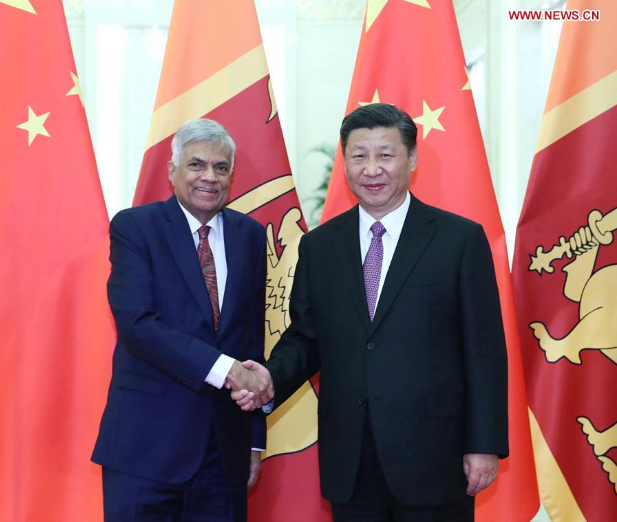The Geopolitical Implications of Sri Lanka Allowing Chinese Ship to Dock
Shi Yan 6 docked at Colombo on Thursday, Oct. 26. Photo: AP Photo/Eranga Jayawardena
On Oct.25, an advanced Chinese research vessel, Shin Yan 6, docked on the port of Colombo amidst India’s fears of China extending its influence over to the Indian subcontinent on an unprecedented scale.
Shi Yan 6 is a 90 meter (300 foot) scientific research vessel on a voyage in the eastern area of the Indian Ocean. Organized by the South China Sea Institute of Oceanology under the Chinese Academy of Sciences, the vessel will operate at sea for 80 days, covering a range of more than 12,000 nautical miles (roughly 14,000 miles).
Sri Lanka’s Foreign Ministry spokesperson, Kapila Fonseka, said the latest ship could dock for replenishment in Colombo, from Oct. 25 until Oct. 28. China expected the vessel would conduct research with Sri Lankan state institutions, however Fonseka said Sri Lanka granted only replenishment permits and declared that no research work would take place.
India maintains China has other motives in mind, including espionage and surveillance of India, which is only about 770 nautical miles away from Sri Lanka.
China’s Xi Jingping shaking hands with Sri Lanka’s Ranil Wickremesinghe at Beijing in 2017. Photo: Xinhua/Xie Huanchi
India’s current apprehensions of China extending its influence originates from key events in recent history. The docking of a pair of Chinese submarines in 2014 and the Yuan Wang 5 at the Hambantota port in Sri Lanka last year raised suspicion in New Delhi about China’s motives of surveillance and spying on India. The ship's arrival increased tensions between New Delhi and Beijing, who are both significant investors of Sri Lanka. China claimed the ship would be in use for scientific research. However, Sri Lanka asserted that they only gave permission to dock on the condition that no scientific research occurs in Sri Lankan waters.
China, denied all these allegations in the Yuan Wang 5 case as well as the current Shin Yan 6 event. They consistently maintained the peaceful and purely research motives of their ships. China did not comment on Sri Lanka’s decision to not permit research and only allowed for replenishment of these vessels.
Sri Lanka finds itself in a strategic geographical position, placed halfway along key east-west shipping routes. In addition, Sri Lanka also finds itself in a key geopolitical situation, between India and China, with efforts to find a middle ground between the strong and contradictory demands and expectations of each side.
In April 2022, Sri Lanka declared bankruptcy with more than $83 billion in debt from more than half to foreign creditors. Sri Lanka took out many loans, with China majorly assisting, accounting for about 10% of Sri Lanka’s loans. Sri Lanka also borrowed large amounts from China over the past decade for infrastructure projects including a seaport, airport and a city built on reclaimed land. As a result of not garnering enough revenue to pay back these loans, Sri Lanka leased the seaport in Hambantota to China, once again amidst concerns raised by New Delhi.
With Sri Lanka now in the middle of China and India, it will find itself in many similar positions in the future. Sri Lanka's biggest foreseeable challenge will be to pick a side unless they can pave common ground between demands from both New Delhi and Beijing.


